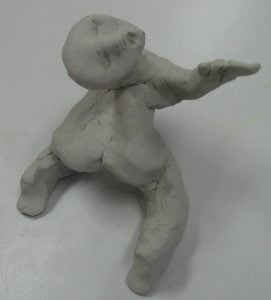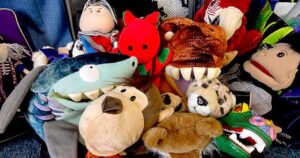Creative visualisation:

Creative visualisation helps the child’s understanding and thinking. It aids physical relaxation, improves concentration, helps the child’s control over thought process and to deal with stress. It also improves a child’s mindfulness and enhances a child’s self-understanding. It improves creative thinking and memory. I do this regularly with my clients, helping the child firstly to relax the body, and then calm the breath.
Storytelling:
Storytelling helps the child’s moral and spiritual development and is linked to creative visualisation. Using several scripts that I have perfected over the years. Afterward I ask the child to draw or paint a picture of the visualisation afterwards. Additionally I help the child to anchor the visual image so that that she can use it later using body movement, such as tickling the palm. I also encourage the child to tell a story from the picture, or from selected miniatures. Further I read stories to the child.
Sometimes I write a story of their circumstances and how in the end, things will be better and the child finds her own place in the world.
Movement, dance and music:
Movement, dance and music is about body language, posture, gestures, words, stance and eye contact. Movement and dance is an awareness exploration. The body moves through space with flow and meaning. Music in therapy is done by improvisation instead of following any special theme and is used for expressing
emotions. This helps the child’s communication of emotional and physical wellbeing, and furthers the self-understanding.
I have skipping ropes and hula-hoops to help co-ordination. Children often combine dance, music and dressing up in their play. For example being a lion stomping in the savannah beating drums etc, or dressed up as a witch flying around on a broom stick and singing. Older children search music from the web and then show me their dance movements. I also use music to attune with the child.
Puppets, masks and drama:
Puppets, mask and drama gives the child the power over the reality and over the character she chooses. She can, in this dramatic reality, respond according to her needs, and change the original scene. This provides the child with the means to deal indirectly with issues that they have difficulties owning. This helps the child to relieve these difficult issues and feelings, this helps the caring for self, to develop communication and social relationships skills and to gain mastery over issues and events. The child engages in pretend play using imaginary or real props. Spontaneity helps the child towards right decisions in a new situation or a new response to an old situation. Role playing, creativity, spontaneity, and ability to improvise helps the child to have a balanced emotional state that then leads to successful social interactions.
Children often create dramatic play in the sand or in the doll’s house. They have a choice of puppets. Different dress-up clothing is provided and pieces of cloth to drape around the body.
Art, craft and clay:
 Art, craft and clay helps the child’s creativity and aesthetic experiences. Lateral thinking and problem solving. In art therapy the client creates art drawing, painting, and sculpture. The emphasis is on the creating process rather than the result. Art therapy aids the client to have a supervised release.
Art, craft and clay helps the child’s creativity and aesthetic experiences. Lateral thinking and problem solving. In art therapy the client creates art drawing, painting, and sculpture. The emphasis is on the creating process rather than the result. Art therapy aids the client to have a supervised release.
This is one of my strong points, since I have an MA in Art Therapy. I have all the possible paints, colour pencils and crayons available. Different textured and coloured papers and boards to create pieces. Drawers full of different craft materials. Ribbons, different coloured and patterned cloths, beads, feathers, masks to decorate etc.
Sandplay/ sand worlds:
 Sandplay helps the child’s emotional expression and problem solving. The child is using creativity to express feelings in a sandtray. The world done in the sandtray reflects the child’s inner states from the nonverbal realm. Sandplay is a non-directive expression within safe container. I usually get the child to do one sandplay in each session, and additionally all the other play activities that the child wants to engage with.
Sandplay helps the child’s emotional expression and problem solving. The child is using creativity to express feelings in a sandtray. The world done in the sandtray reflects the child’s inner states from the nonverbal realm. Sandplay is a non-directive expression within safe container. I usually get the child to do one sandplay in each session, and additionally all the other play activities that the child wants to engage with.





